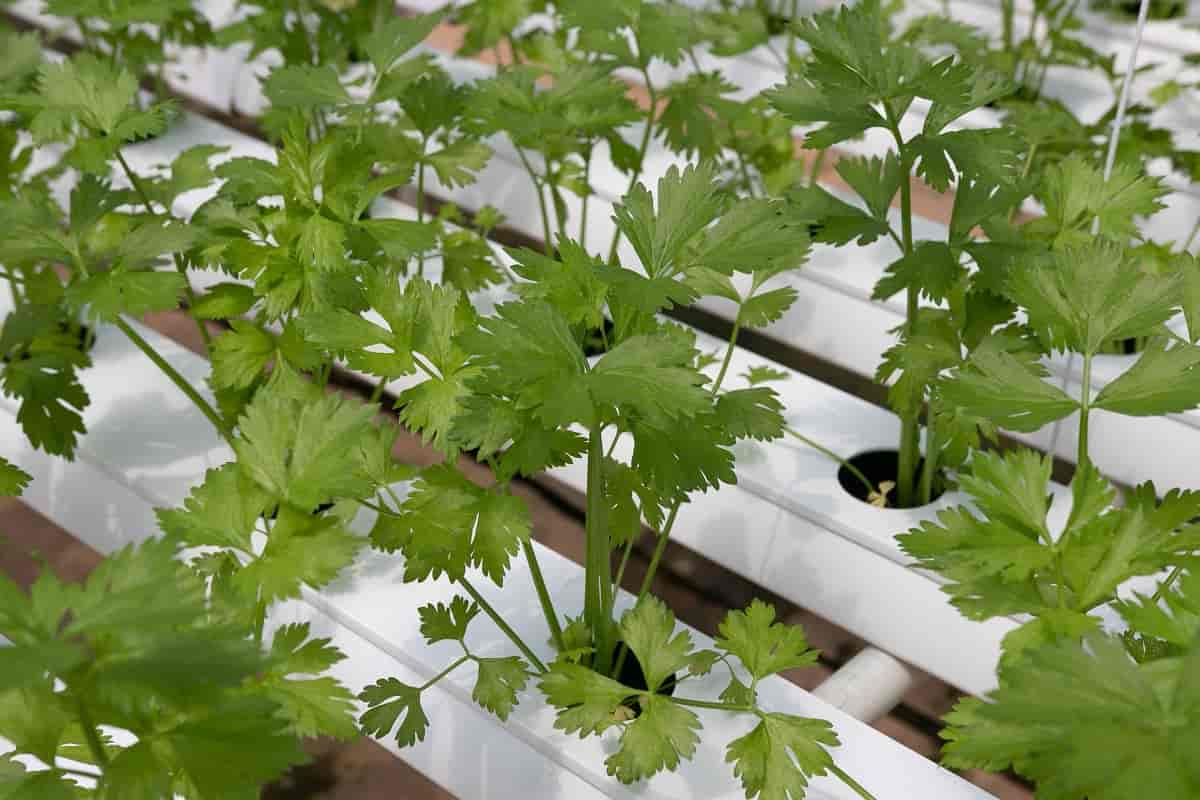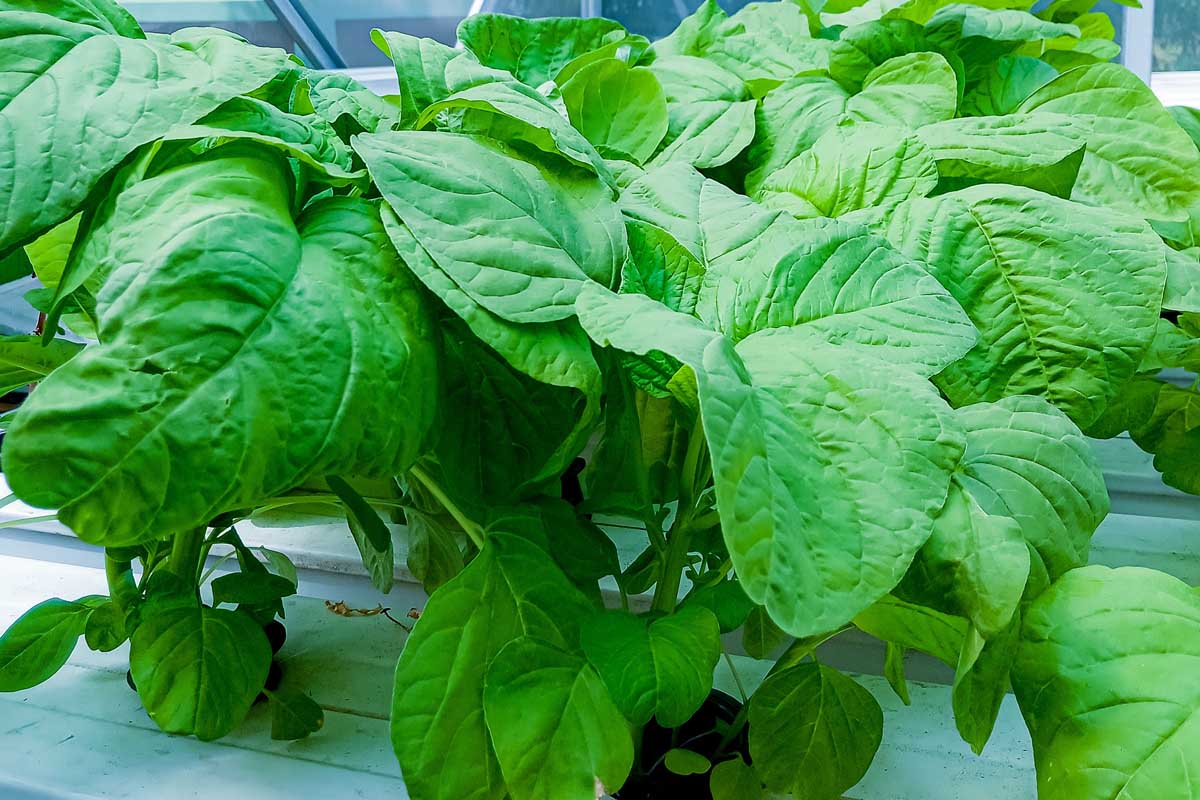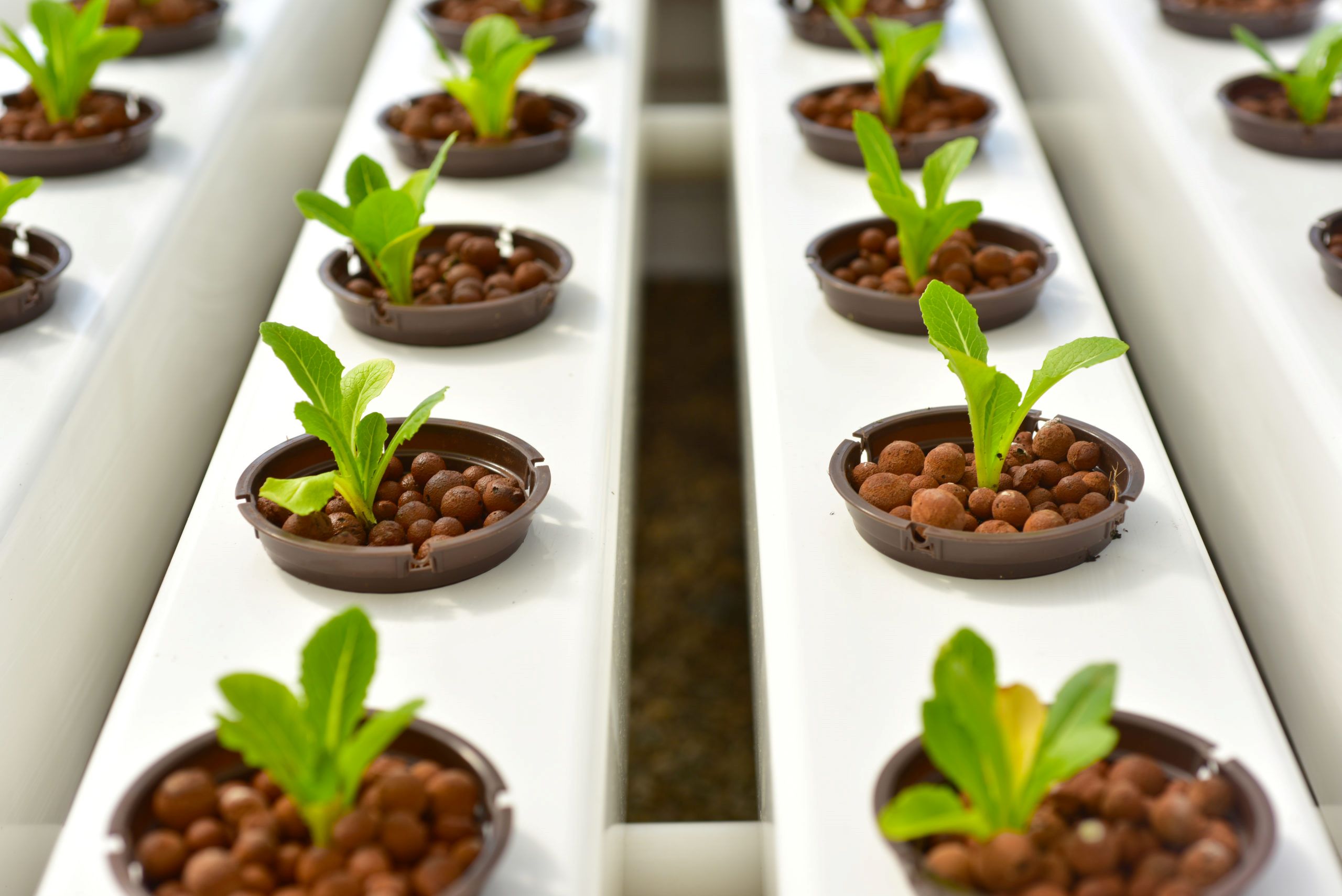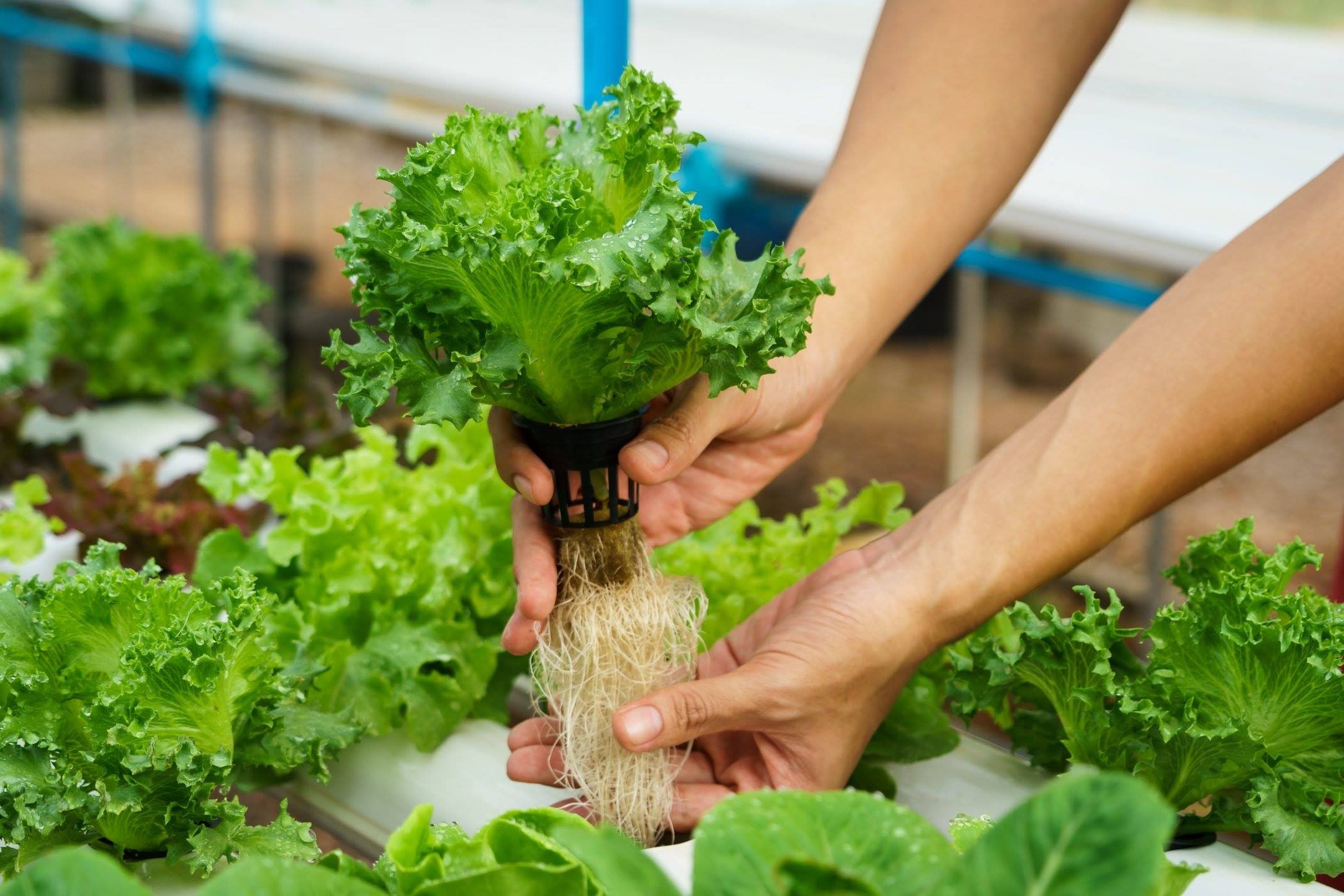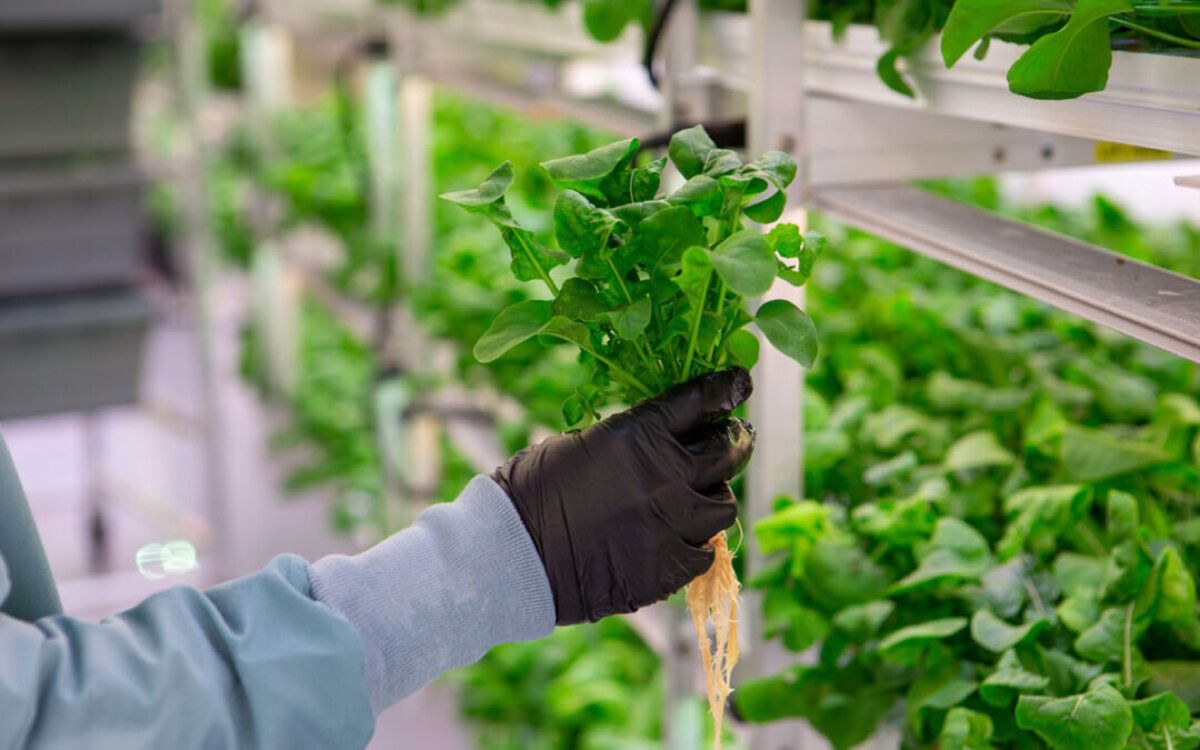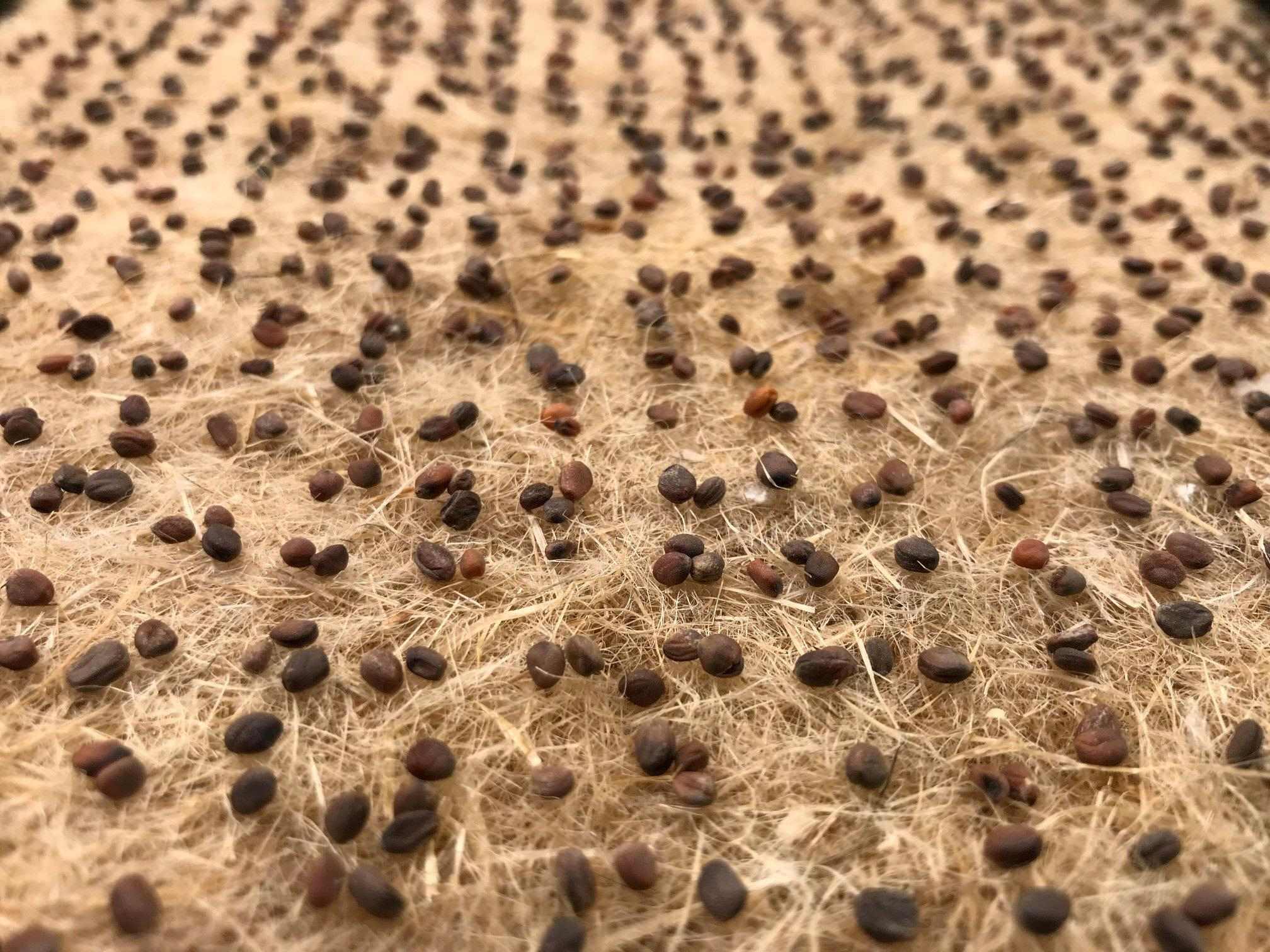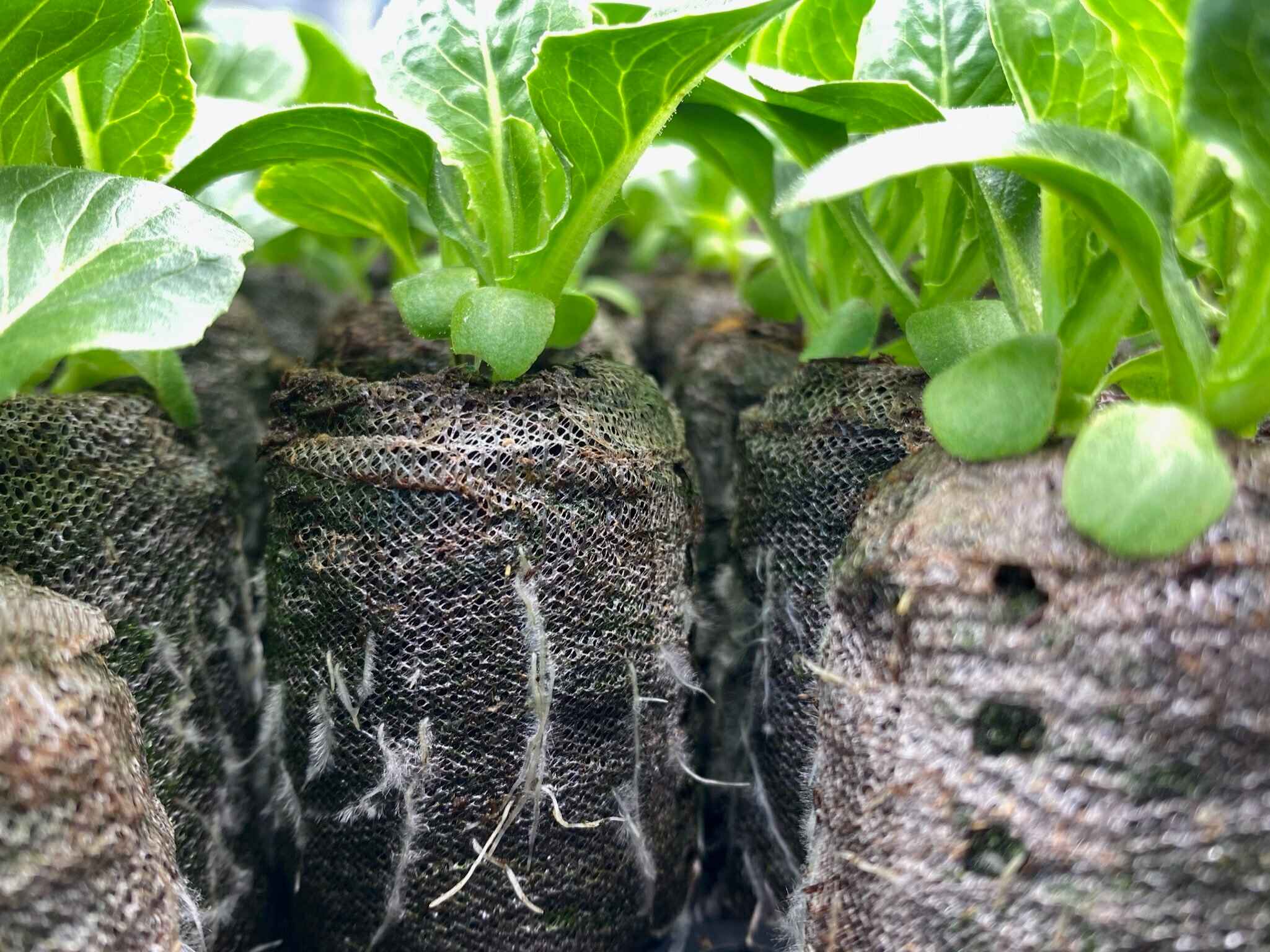Home>Gardening Tips and Tricks>Maximizing Yield>How To Grow Tomatoes Using Hydroponics
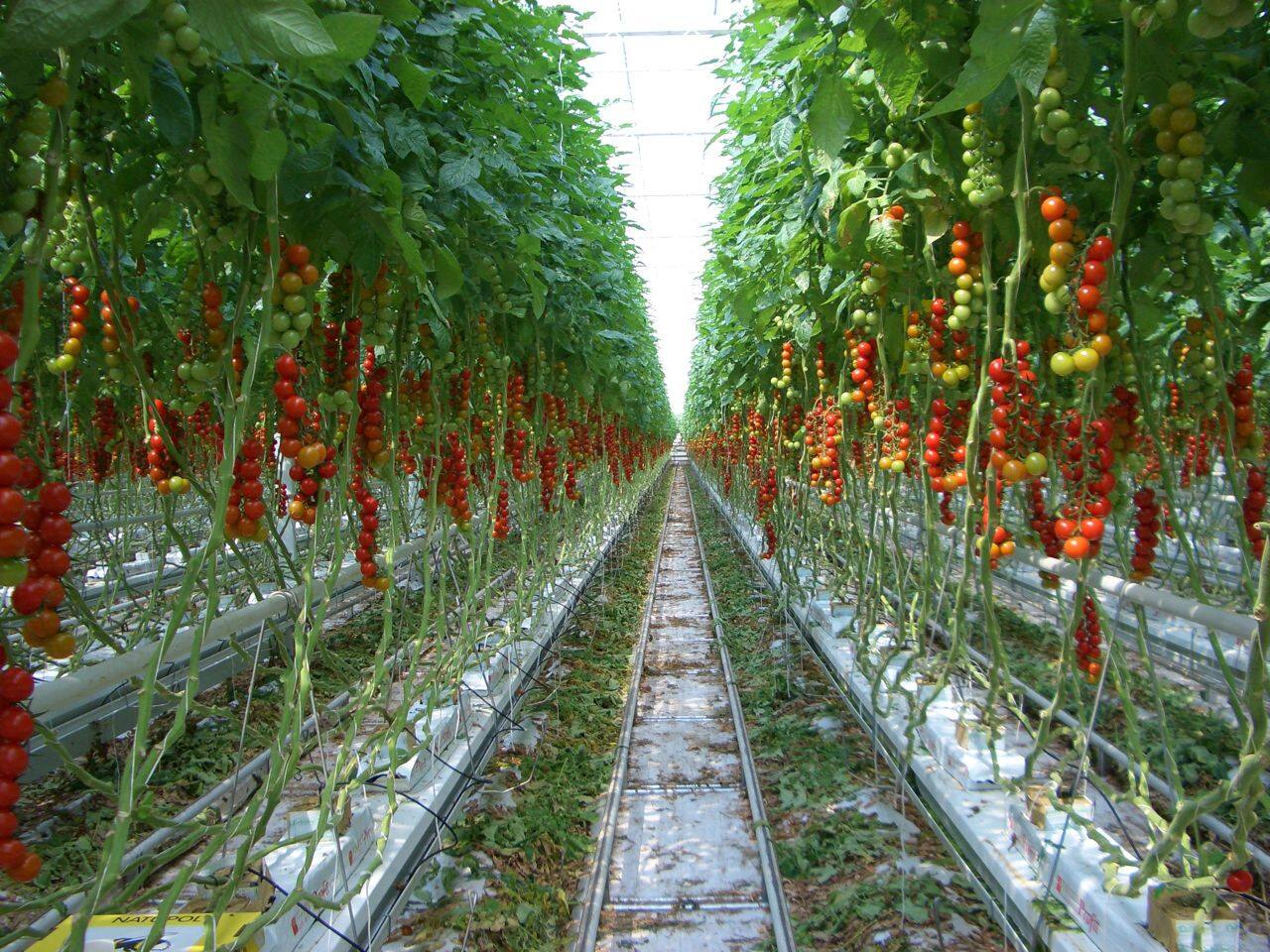

Maximizing Yield
How To Grow Tomatoes Using Hydroponics
Modified: January 22, 2024
Learn how to grow tomatoes using hydroponics and maximize your yield with these expert tips and techniques. Achieve abundant harvests with this efficient and innovative method.
(Many of the links in this article redirect to a specific reviewed product. Your purchase of these products through affiliate links helps to generate commission for Chicagolandgardening.com, at no extra cost. Learn more)
Table of Contents
- Introduction
- Benefits of Hydroponic Tomato Cultivation
- Choosing the Right Hydroponic System
- Selecting Tomato Varieties for Hydroponics
- Preparing the Hydroponic Growing Environment
- Nutrient Solution Preparation and Management
- Planting Tomato Seeds or Seedlings
- Proper Lighting and Temperature for Tomato Growth
- Providing Adequate Water and Air Circulation
- Pruning and Training Tomato Plants
- Preventing and Managing Pests and Diseases
- Harvesting and Enjoying Hydroponic Tomatoes
- Conclusion
Introduction
Welcome to the world of hydroponic tomato cultivation! Gone are the days when you needed a large backyard and fertile soil to grow your own delicious tomatoes. With the advent of hydroponics, even the tiniest of spaces can be transformed into a thriving tomato garden. Whether you’re a seasoned gardener looking to try something new or a beginner with a green thumb, hydroponics offers a convenient and efficient way to maximize your tomato yield.
Hydroponics is a method of growing plants without soil, where nutrients are delivered directly to the plant roots in a water-based solution. This soil-less approach offers several benefits that make it an attractive option for tomato cultivation. Firstly, hydroponics allows you to have complete control over the growing environment, including nutrient levels, pH balance, and water content. This precision ensures that your tomato plants receive the ideal conditions for growth, resulting in healthier plants and higher yields.
Secondly, hydroponic systems require significantly less space compared to traditional soil-based gardens. This makes it a perfect solution for urban dwellers or those with limited gardening areas. You can set up a hydroponic system in a spare room, balcony, or even a small corner of your kitchen and still enjoy an abundant harvest of fresh, juicy tomatoes.
Furthermore, hydroponics eliminates the need for weeding and dealing with soil-related pests and diseases. Without soil, your tomato plants are less prone to common issues such as root rot, fungal infections, or nutrient deficiencies. This means less time spent on maintenance and more time enjoying the fruits of your labor.
In this guide, we will explore the various aspects of hydroponic tomato cultivation, from choosing the right system to harvesting your first ripe tomato. So, let’s dive in and discover how to grow tomatoes using hydroponics!
Benefits of Hydroponic Tomato Cultivation
Hydroponic tomato cultivation offers a wide range of benefits that make it an appealing choice for both professional growers and home gardeners. Let’s explore some of the key advantages of growing tomatoes using hydroponic systems:
- Optimal Nutrient Delivery: With hydroponics, you have complete control over the nutrient solution provided to your tomato plants. This means you can ensure they receive the perfect balance of essential nutrients, promoting healthy growth and maximizing yields.
- Water Efficiency: Hydroponics is an incredibly water-efficient method of cultivation. Compared to traditional soil-based gardening, hydroponic systems use up to 90% less water. Plus, any excess water can be easily recycled back into the system, reducing waste.
- Saving Space: Hydroponics allows you to grow tomatoes vertically, allowing for efficient space utilization. By using trellises or vertical towers, you can grow more plants in a smaller area, making it an excellent option for urban gardeners or those with limited space.
- Year-Round Cultivation: With hydroponics, you can grow tomatoes year-round, regardless of the season or climate. By controlling the indoor environment, including temperature, humidity, and lighting, you can provide the ideal conditions for tomato growth and enjoy a consistent supply of fresh tomatoes throughout the year.
- Pest and Disease Control: Without soil, hydroponics reduces the risk of soil-borne diseases and pests that commonly affect tomatoes. This means fewer chemicals and pesticides are required, resulting in healthier and safer produce.
- Maximized Yield: The controlled environment and optimal nutrient delivery in hydroponics promote vigorous growth and high yields. Tomato plants grown hydroponically tend to produce larger, tastier fruits and have a shorter growing cycle, allowing for multiple harvests in a season.
- Quality and Flavor: Hydroponically grown tomatoes are known for their exceptional quality and flavor. By providing the precise balance of nutrients and environmental control, hydroponic systems encourage the development of rich, juicy tomatoes with superior taste and texture.
These advantages highlight why hydroponic tomato cultivation has gained popularity among growers and gardening enthusiasts. By harnessing the power of hydroponics, you can enjoy the benefits of efficient, year-round, and high-yield tomato production while having complete control over the quality and flavor of your harvest.
Choosing the Right Hydroponic System
When it comes to hydroponic tomato cultivation, choosing the right system is crucial for the success of your plants. There are several types of hydroponic systems available, each with its own pros and cons. Here are some popular options to consider:
- Drip Irrigation System: This is one of the most common and beginner-friendly hydroponic systems. It involves using a pump to deliver nutrient-rich water to the plants through a network of tubes and drippers. Drip systems are versatile and can be used for both small-scale and large-scale tomato cultivation.
- Nutrient Film Technique (NFT) System: NFT systems rely on a thin film of nutrient-rich water flowing along channels or gullies, with the plant roots suspended in the film. This system provides excellent oxygenation for the roots and is well-suited for growing tomatoes, especially in a commercial setting.
- Deep Water Culture (DWC) System: In a DWC system, plant roots are suspended in a nutrient solution, allowing them to uptake water and nutrients directly. This simple and cost-effective system works well for growing tomatoes but requires careful monitoring of oxygen levels in the water.
- Aeroponic System: Aeroponics involves misting or spraying the plant roots with a nutrient solution. This system provides maximum oxygenation and nutrient availability, resulting in rapid growth and high yields. However, it requires more advanced skills and precise control over environmental conditions.
- Vertical Tower System: Vertical tower systems are ideal for those with limited space. They involve stacking multiple layers of pots or containers vertically, allowing for efficient use of space. Tomato plants can grow vertically, and this system provides good aeration and drainage for the plants.
When choosing a hydroponic system, consider factors such as your available space, budget, level of expertise, and the number of tomato plants you plan to grow. Additionally, take into account the specific requirements of tomato plants, such as support for their height, airflow for proper ventilation, and the ability to accommodate the size of their root systems.
It’s important to research and understand the mechanics and maintenance requirements of each system before making a decision. Additionally, consider seeking advice from experienced hydroponic growers or horticulture experts who can provide valuable insights and recommendations based on your specific circumstances.
By selecting the right hydroponic system for your tomato cultivation, you’ll set a solid foundation for achieving optimal growth, maximizing yields, and enjoying a successful hydroponic gardening experience.
Selecting Tomato Varieties for Hydroponics
When it comes to hydroponic tomato cultivation, selecting the right tomato varieties is essential. Different tomato varieties have varying growth habits, fruit sizes, flavors, and disease resistances. Here are some factors to consider when choosing tomato varieties for your hydroponic garden:
- Growth Habit: Determinate varieties are compact and have a bush-like growth habit, making them suitable for small spaces or containers. Indeterminate varieties, on the other hand, are vining and continue to grow throughout the season, requiring trellising or support systems.
- Yield: Look for tomato varieties that are known for their high yield potential. Some varieties produce larger fruit clusters, while others have a higher overall fruit production. Consider your space limitations and desired yield when selecting tomato varieties.
- Fruit Size and Shape: Tomatoes come in various sizes and shapes, from cherry tomatoes to beefsteak and roma tomatoes. Choose varieties that suit your culinary needs and preferences. Take into consideration factors such as flavor, texture, and the intended use of the fruits.
- Disease Resistance: Hydroponics may reduce the risk of certain diseases compared to soil-based cultivation, but it’s still important to select varieties with disease resistance. Look for tomatoes that are resistant to common tomato diseases such as powdery mildew, fusarium wilt, and verticillium wilt.
- Flavor Profile: Consider the taste and flavor characteristics of the tomato varieties. Some may have a sweeter flavor, while others are more acidic or tangy. Choose varieties that align with your preferred tomato flavor profile and culinary uses.
- Growing Conditions: Certain tomato varieties may have specific environmental requirements. Consider factors such as temperature tolerance, humidity preferences, and sunlight requirements. Select varieties that will thrive in your specific hydroponic growing environment.
When choosing tomato varieties, it’s always a good idea to consult local nursery experts or experienced hydroponic growers. They can provide valuable insights into the best varieties for your specific region and growing conditions. Additionally, consider experimenting with different tomato varieties each growing season to discover new favorites and expand your culinary options.
By carefully selecting tomato varieties that align with your preferences and growing conditions, you’ll set the stage for a successful hydroponic tomato garden, filled with delicious and bountiful harvests.
Preparing the Hydroponic Growing Environment
Creating the right growing environment is crucial for the success of your hydroponic tomato garden. Here are some important steps to follow when preparing the hydroponic growing environment:
- Selecting the Growing Area: Choose an area that receives ample sunlight or invest in grow lights to mimic natural sunlight. Ensure the space is well-ventilated to maintain proper airflow and prevent excessive humidity.
- Setting up the Hydroponic System: Install your chosen hydroponic system, following the manufacturer’s instructions. Ensure that all components are securely in place and functioning properly. Take care to position the system in a stable location that can support the weight of the plants and the nutrient solution.
- Setting up the Grow Medium: Depending on the hydroponic system you’re using, you may need to place your tomato plants in a growing medium. Common options include perlite, coconut coir, or rockwool cubes. These mediums provide support for the plants and help with moisture retention.
- Mixing the Nutrient Solution: Follow the instructions provided by the manufacturer to prepare the nutrient solution for your hydroponic system. Maintain the appropriate nutrient balance for each stage of growth, and regularly monitor and adjust the pH levels to ensure optimal nutrient uptake by the tomato plants.
- Monitoring Temperature and Humidity: Tomatoes thrive in temperatures between 70-85°F (21-29°C). Use a thermometer to monitor the temperature of the growing environment and make adjustments as necessary. Additionally, maintain humidity levels between 40-60% to prevent excessive moisture-related problems.
- Providing Adequate Lighting: If you don’t have access to sufficient natural sunlight, invest in grow lights that provide the spectrum of light required for optimal plant growth. Position the lights at the appropriate distance from the plants to prevent burning while ensuring they receive adequate intensity.
- Ensuring Proper Air Circulation: Use fans or ventilation systems to maintain good air circulation in the growing area. Air movement helps strengthen the plants, prevent pests and diseases, and ensure the even distribution of temperature and humidity throughout the hydroponic system.
- Installing Trellises or Support Systems: Most tomato varieties require support for their vines and fruits. Depending on the growth habit of the tomato plants, install trellises, cages, or stakes to provide the necessary support and prevent the plants from becoming tangled or falling over.
By properly preparing the hydroponic growing environment, you’ll create an optimal setting for your tomato plants to thrive. Regularly monitor and adjust the environmental conditions as needed to ensure healthy plant growth, maximize yields, and enjoy a successful hydroponic tomato garden.
Nutrient Solution Preparation and Management
In hydroponic tomato cultivation, providing the right balance of nutrients is crucial for the healthy growth and development of your plants. Here are some important factors to consider when preparing and managing the nutrient solution:
- Understanding Nutrient Requirements: Tomatoes require a range of essential nutrients, including macronutrients (nitrogen, phosphorus, potassium) and micronutrients (calcium, magnesium, iron, etc.). Different growth stages may require varying nutrient ratios. Research the specific nutrient requirements of tomatoes and adjust your nutrient solution accordingly.
- Choosing a Nutrient Formula: There are various commercially available hydroponic nutrient formulations specifically designed for tomatoes. These formulations provide the ideal ratios of nutrients needed for optimal growth. Follow the instructions provided by the manufacturer to properly mix the nutrient solution.
- Measuring and Adjusting pH Levels: Maintain the pH level of the nutrient solution within the appropriate range for optimal nutrient absorption. Tomato plants typically prefer a slightly acidic pH between 5.8 and 6.3. Use a pH meter or pH test kit to monitor the pH level regularly and make adjustments using pH up or pH down solutions.
- Monitoring EC Levels: EC, or Electrical Conductivity, measures the nutrient concentration in the solution. It indicates the strength of the nutrient solution and the plants’ ability to absorb nutrients. Use an EC meter to regularly monitor and adjust the EC levels as needed, ensuring plants receive the correct nutrient strength.
- Watering and Nutrient Delivery: Depending on your hydroponic system, adjust the timing and frequency of nutrient delivery to ensure the plants receive sufficient water and nutrients. Avoid overwatering or allowing the roots to sit in stagnant water, as this can lead to root rot and other issues.
- Regular Solution Changes: Over time, the nutrient solution can become imbalanced or depleted of certain nutrients. It’s important to regularly change the nutrient solution to maintain optimal nutrient levels. The frequency of solution changes will depend on factors such as plant size, growth stage, and nutrient uptake.
- Supplementing with Beneficial Microbes: Consider adding beneficial microbes, such as mycorrhizal fungi or beneficial bacteria, to the nutrient solution. These microorganisms can improve nutrient uptake, enhance plant health, and increase disease resistance in the hydroponic system.
- Keeping Records and Logging: Maintaining a log of nutrient solution changes, pH and EC levels, and any adjustments made can help identify patterns, track plant progress, and troubleshoot issues. Regularly monitor and document the changes to ensure consistent and effective nutrient management.
Remember, nutrient solution management is an ongoing process in hydroponic tomato cultivation. Regularly monitor the nutrient solution, make necessary adjustments, and keep a close eye on the overall health of your tomato plants to ensure they receive the optimal nutrition they need to thrive.
Planting Tomato Seeds or Seedlings
When it comes to growing tomatoes hydroponically, you have the option to start from seeds or use seedlings. Here are the steps to successfully plant tomato seeds or seedlings in your hydroponic system:
- Seed Selection: If you choose to start from seeds, select high-quality tomato seeds of the desired variety. Consider factors such as disease resistance, growth habit, and fruit characteristics. Ensure the seeds are fresh and from a reputable source to maximize germination rates.
- Germination: Start the germination process by placing the tomato seeds on a damp paper towel or in a seed tray with a germination medium. Keep them in a warm and well-lit area. Monitor the moisture levels and ensure proper ventilation. Within 5-10 days, the seeds should sprout, indicating they are ready for transplantation.
- Preparing Seedlings: If you prefer using seedlings, purchase or grow tomato seedlings in small pots or trays. Ensure they have developed strong roots and healthy leaves before transplanting them into the hydroponic system. Harden off the seedlings by gradually exposing them to outdoor conditions to strengthen their resilience.
- Seedling Transplantation: Gently remove the seedlings from their pots, taking care not to damage the delicate roots. Place the seedlings in prepared holes or growing cups within the hydroponic system, ensuring the roots are fully covered with the growing medium. Firmly press the medium around the seedlings to stabilize them.
- Proper Spacing: Space the tomato seedlings adequately within the hydroponic system to allow for proper airflow and light penetration. Follow the recommended spacing guidelines based on the specific variety you are growing. This will minimize competition for resources and prevent overcrowding as the plants mature.
- Adjusting System Conditions: After transplanting the seedlings, make any necessary adjustments to the environmental conditions in the hydroponic system. Ensure proper lighting, humidity, temperature, and nutrient solution levels to support the growth and development of the tomato plants.
- Supporting the Plants: Install trellises, cages, or stakes in the hydroponic system to support the tomato plants as they grow. This will help prevent their vines from sprawling and promote proper fruit development. Secure the plants to the support structures as they grow taller to prevent damage and maintain an organized system.
- Regular Monitoring and Care: Monitor the progress of your tomato plants daily. Check for signs of nutrient deficiencies or imbalances, pests, diseases, or any other issues. Adjust the nutrient solution, pruning, and training the plants as needed to ensure optimal growth, development, and fruit production.
By following these steps, you can effectively plant tomato seeds or seedlings in your hydroponic system. With proper care and attention, you’ll soon be on your way to enjoying a bountiful harvest of fresh, flavorful tomatoes.
Proper Lighting and Temperature for Tomato Growth
Providing the right lighting and maintaining optimal temperature is crucial for the successful growth and development of tomatoes in a hydroponic system. Here are some important factors to consider:
- Lighting Requirements: Tomatoes require adequate light to undergo photosynthesis and produce energy for growth. If you don’t have access to sufficient natural sunlight, consider using artificial grow lights specifically designed for plants. LED lights are commonly used in hydroponic systems due to their energy efficiency and ability to provide the necessary spectrum of light for plant growth.
- Light Duration: Tomato plants typically require 12-16 hours of light per day for optimal growth. Maintain a consistent light schedule to provide the plants with the appropriate amount of light for their growth stage. Use a timer to ensure a consistent lighting cycle and to prevent overexposure or light deprivation.
- Light Intensity: The light intensity required for tomato plants varies throughout their growth stages. Seedlings and young plants require lower light intensity, while flowering and fruiting plants need higher intensity. Adjust the height and intensity of the grow lights accordingly to provide the optimal amount of light without causing heat stress or light burn on the plants.
- Temperature Range: Tomatoes thrive in temperatures between 70-85°F (21-29°C). Provide a stable and consistent temperature within this range to ensure optimal growth. Avoid extreme temperature fluctuations, as they can affect plant growth, flowering, and fruit development.
- Daytime and Nighttime Temperature: Aim for a temperature difference between daytime and nighttime to mimic natural conditions and promote healthy growth. Maintain a slightly lower temperature during the night, around 60-70°F (15-21°C), while keeping the daytime temperature within the optimal range mentioned above.
- Air Circulation: Proper air circulation is crucial for temperature regulation and preventing the buildup of heat and humidity. Use fans or ventilation systems to ensure a gentle breeze and airflow around the plants. This helps strengthen the stems, prevent diseases, and promote proper transpiration.
- Monitoring Temperature: Regularly monitor the temperature of the growing area using a thermometer or a temperature and humidity monitoring system. This helps you make any necessary adjustments to maintain the ideal temperature range for the tomato plants.
- Humidity Control: Tomatoes grow best in a humidity range of 40-60%. Too much humidity can encourage fungal diseases, while low humidity can cause stress and affect fruit development. Use a hygrometer to measure humidity levels and employ ventilation or humidifiers to adjust the humidity as needed.
By providing proper lighting and maintaining the optimal temperature range, you’ll create the ideal conditions for tomato growth in your hydroponic system. Regular monitoring, adjustments, and care will ensure that your tomato plants thrive and produce abundant, healthy, and delicious fruits.
Providing Adequate Water and Air Circulation
Ensuring a proper balance of water and air circulation is essential for the healthy growth of tomato plants in a hydroponic system. Here’s what you need to know:
- Watering: Water is a vital element for tomato plants, as it transports nutrients through their roots and helps maintain their turgidity. Monitor the moisture levels in the growing medium or the hydroponic system and provide water as needed. Avoid overwatering, as it can lead to root rot, while underwatering can cause stress and nutrient deficiencies.
- Water Quality: Use clean, fresh water for your hydroponic system. Avoid water that is high in chlorine or other harmful substances, as they can negatively impact plant health. Consider using a water filter or letting the water sit for a day to allow chlorine to dissipate before using it in your hydroponic system.
- Nutrient Solution and pH: Water is an essential component of the nutrient solution in a hydroponic system. Ensure the proper mixing and management of the nutrient solution, taking into account the specific nutrient requirements of tomato plants. Regularly check and adjust the pH levels of the nutrient solution to maintain the optimal pH range for nutrient uptake.
- Air Circulation: Proper air circulation is crucial for several reasons. It helps strengthen the stems of tomato plants, reduces the risk of fungal diseases, and controls temperature and humidity levels. Use fans or ventilation systems to maintain gentle air movement around the plants. Carefully position the fans to avoid direct drafts that may harm the plants.
- Ventilation: Adequate ventilation is important for preventing the build-up of heat, humidity, and stale air in the growing area. Ensure proper ventilation to allow fresh air exchange and prevent the accumulation of excess moisture. This helps minimize the risk of diseases and enhances the overall health and productivity of the tomato plants.
- Placement of Fans: Position fans strategically to create a gentle airflow throughout the hydroponic system. This promotes better transpiration, strengthens the plants, and helps with temperature regulation. Point the fans towards plant canopies but avoid directly blowing on them, as this could cause damage or excessive evaporation.
- Ventilation Fans: Consider using exhaust fans or ventilation systems to remove stale air and bring in fresh air from outside. These systems help control temperature, humidity, and carbon dioxide levels, creating a more favorable environment for the tomato plants to grow and thrive.
- Minimizing Airborne Pests and Diseases: Proper air circulation can help deter airborne pests and reduce the risk of diseases in the hydroponic system. Circulating air hinders the movement of pests such as whiteflies and aphids. Additionally, it discourages the growth of fungi and molds that can cause diseases in plants.
By providing adequate water and ensuring proper air circulation, you create a favorable environment for the healthy growth of tomato plants in your hydroponic system. Regularly monitor and adjust watering practices, as well as maintain good air circulation, to promote strong, productive plants and minimize the risk of issues such as diseases and pests.
Pruning and Training Tomato Plants
Pruning and training tomato plants are important practices in hydroponic cultivation to promote proper growth, improve air circulation, and maximize fruit production. Here are some key considerations for pruning and training tomato plants in a hydroponic system:
- Removing Suckers: Tomato plants produce lateral shoots known as “suckers” that emerge from the leaf axils. These suckers compete for nutrients and can hinder airflow. Regularly remove suckers by pinching them off when they are small. This allows the plant to direct energy towards fruit production and main stem growth.
- Supporting the Main Stem: Use stakes, trellises, or cages to support the main stem of the tomato plant as it grows. Secure the stem to the support structure using soft ties or plant clips. Proper support prevents the main stem from bending or breaking due to the weight of the plant and its fruits.
- Pruning Excessive Foliage: Overgrowth of foliage can block light penetration and hinder air circulation, leading to increased humidity and potential fungal diseases. Prune excessive foliage, especially from the lower parts of the plant, to improve airflow and reduce the risk of diseases. Focus on removing yellowing, damaged, or crowded leaves.
- Tying and Training: As the tomato plant grows, gently tie the branches to the support structure using soft ties or plant clips. Train the branches to grow vertically rather than sprawling. This helps create an organized and compact plant structure, making it easier to manage and maximizing light exposure for all parts of the plant.
- Pruning Lower Branches: Removing lower branches that are close to the ground helps minimize the risk of soil-borne diseases and pests. Prune these branches carefully, ensuring not to damage the main stem or upper branches. This enhances air circulation and eases maintenance tasks such as watering and fertilizing.
- Managing Tomato Suckers: There are differing opinions on whether to remove all suckers or leave a few. For determinate varieties, removing most or all suckers can be beneficial as it directs energy towards fruit production. For indeterminate varieties, selectively removing suckers can help balance plant vigor and fruit set without overburdening the plant.
- Continual Pruning and Training: Pruning and training tomato plants should be an ongoing process throughout the growing season. Regularly inspect the plants for new sucker growth, excessive foliage, or tangled branches. Prune and train as necessary to maintain a well-structured plant with good airflow and maximum light exposure.
- Sanitizing Tools: Before and after each pruning session, sterilize your pruning tools with a solution of diluted bleach or rubbing alcohol. This prevents the spread of diseases between plants and ensures clean cuts. Clean tools also make pruning easier and less damaging to the plant.
By consistently applying pruning and training techniques, you can help tomato plants in your hydroponic system grow in a controlled and organized manner. Proper pruning and training practices enhance plant health, promote optimal airflow and light penetration, and contribute to increased fruit production and quality.
Preventing and Managing Pests and Diseases
Pests and diseases can pose challenges to the health and productivity of tomato plants in a hydroponic system. Here are some effective strategies to prevent and manage common pests and diseases:
- Sanitation: Maintaining a clean growing environment is key to preventing the spread of pests and diseases. Regularly remove fallen leaves, debris, and plant remains from the hydroponic system. Clean and disinfect any tools or equipment used in the system to minimize the risk of contamination.
- Monitor Regularly: Keep a close eye on your tomato plants for signs of pest infestation or disease symptoms. Inspect the leaves, stems, and fruits for any visible damage, discoloration, or presence of pests. Early detection allows for prompt action and prevents further spread.
- Integrated Pest Management (IPM): Adopt an IPM approach by incorporating multiple strategies to control pests. This includes using biological controls like beneficial insects (such as ladybugs or predatory mites) or implementing cultural practices (such as releasing beneficial nematodes or using sticky traps) to disrupt pest lifecycles.
- Preventative Measures: Take preventative measures to minimize the risk of pests and diseases. This includes using pest-resistant tomato varieties, maintaining proper spacing between plants for good airflow, and practicing good hygiene by washing your hands before handling plants.
- Pruning and Air Circulation: Proper pruning helps improve air circulation and reduces the risk of fungal diseases. It also allows for better inspection and management of pests. Remove infected or damaged plant parts promptly and maintain good airflow within the hydroponic system.
- Biological Pest Control: Utilize natural predators or biological controls to manage common pests. Introduce beneficial insects such as ladybugs or lacewings that feed on aphids and other pests. Use nematodes to control soil-dwelling pests like root-knot nematodes.
- Hygiene and Quarantine: Practice strict hygiene by sanitizing tools, equipment, and containers used in the hydroponic system. If you suspect pest or disease presence, quarantine infected plants to prevent the spread to healthy plants. This prevents further infestation and protects the overall health of the hydroponic garden.
- Organic Pest Control: Consider organic pest control methods such as insecticidal soaps, neem oil, or horticultural oils, which are safe to use in a hydroponic system. These products effectively control pests while minimizing harm to beneficial insects or the environment.
- Monitoring Nutrient Levels: Imbalances in nutrient availability can weaken plants and make them more susceptible to pests and diseases. Regularly monitor and maintain proper nutrient levels to promote strong, healthy plant growth and enhance their natural defenses against pests and diseases.
- Seeking Professional Advice: If pest or disease issues persist or become unmanageable, consult with a local nursery or agricultural expert. They can provide guidance and recommend appropriate solutions tailored to your specific hydroponic setup and geographic location.
By implementing these preventive measures and practicing proactive pest and disease management techniques, you can protect your hydroponic tomato plants and maintain a healthy, thriving garden throughout the growing season.
Harvesting and Enjoying Hydroponic Tomatoes
Harvesting hydroponic tomatoes is an exciting and rewarding experience. Here are some tips to ensure proper harvesting and make the most of your delicious homegrown tomatoes:
- Monitor Ripeness: Regularly check the color and firmness of the tomatoes to determine their ripeness. Different tomato varieties may exhibit different color changes when ripe. Generally, ripe tomatoes will have vibrant colors and give slightly when gently squeezed.
- Pick at the Right Time: Harvest tomatoes when they are fully ripe but still firm enough to handle without squishing. Avoid leaving tomatoes on the vine for too long, as they can become overripe and lose their flavor and texture.
- Use Pruning Shears or Scissors: To harvest tomatoes, use clean pruning shears or scissors to cut the stem just above the calyx (the small green leaves at the top of the fruit). Be careful not to damage the plant or other nearby fruits while harvesting.
- Harvest Continuously: Harvest tomatoes as they reach the desired ripeness. This encourages the plant to continue producing more fruit. Regularly monitor the plants and pick ripe tomatoes every few days to ensure a continuous harvest throughout the growing season.
- Handle with Care: Handle the harvested tomatoes gently to avoid bruising or damaging the fruit. Place them in a shallow container or basket that allows for proper airflow and prevents crushing. Avoid stacking tomatoes on top of each other.
- Enjoy Fresh or Store Properly: Hydroponic tomatoes are best enjoyed fresh. Their flavor and texture are at their peak soon after picking. If you have an abundance of tomatoes, consider sharing them with friends or family. If storing, keep them at room temperature and away from direct sunlight to maintain flavor and quality.
- Preserve or Cook with Tomatoes: If you have a surplus of hydroponic tomatoes, you can try preserving them by canning, making sauces, salsas, or freezing them for later use. These methods allow you to enjoy the taste of homegrown tomatoes all year round.
- Experiment with Different Culinary Uses: Hydroponic tomatoes are incredibly versatile and can be used in a variety of dishes. Use them in salads, sandwiches, soups, pasta sauces, or enjoy them on their own with a sprinkle of salt and a drizzle of olive oil. Get creative and explore different recipes to savor the flavors of your hydroponic harvest.
- Save Seeds for Future Planting: If you have heirloom or open-pollinated tomato varieties, consider saving some seeds from your hydroponic tomatoes for future planting. Properly dry and store the seeds in a cool, dry place for the next growing season.
- Share the Joy: Share the bounty of your hydroponic tomato harvest with family, friends, or neighbors. There’s nothing quite like the satisfaction of sharing the fruits of your labor and spreading the joy of homegrown goodness.
By following these tips and savoring the flavorful rewards of your hydroponic tomato harvest, you’ll truly appreciate the incredible taste and satisfaction that comes with growing your own tomatoes.
Conclusion
Hydroponic tomato cultivation offers a convenient and efficient way to grow your own fresh and delicious tomatoes, regardless of space limitations or geographical constraints. By harnessing the power of hydroponics, you can create an optimal growing environment, provide precise nutrient delivery, and maximize yields.
From selecting the right hydroponic system and tomato varieties to preparing the growing environment and managing nutrient solutions, every step in the process is crucial for success. Proper lighting and temperature, adequate water and air circulation, and regular pruning and training contribute to healthy plant growth and abundant fruit production.
Preventing and managing pests and diseases are important aspects of hydroponic tomato cultivation. By practicing good hygiene, monitoring closely, and employing integrated pest management strategies, you can minimize the risk of pests and diseases and ensure the overall health of your plants.
Finally, harvesting and enjoying the rewards of your hydroponic tomato garden is a delightful experience. Harvest tomatoes when they are ripe, handle them with care, and savor the fruits in various culinary delights or preserve them for future use. Sharing the joy of your homegrown tomatoes with others adds to the satisfaction and fulfillment of your hydroponic gardening endeavors.
In conclusion, hydroponic tomato cultivation combines innovation, efficiency, and the joy of homegrown produce. With proper care, attention to detail, and a passion for growing, you can enjoy the unmatched flavor and quality of fresh hydroponic tomatoes throughout the year.

